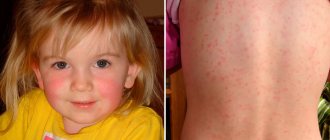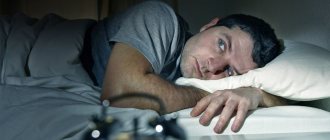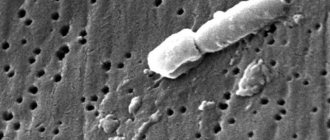What are the causes of apnea?
The most common causes of sleep apnea are:
- excess weight;
- constant stress;
- dysfunction of the endocrine system, especially the thyroid gland;
- congenital or acquired structural features of the upper respiratory tract, for example, narrowing of the nasal passages;
- heredity;
- excessive consumption of strong alcoholic drinks.
Overweight
Excess weight is one of the most important factors in the occurrence and development of apnea. Moreover, here a large body mass should be directly released, which leads to difficulty breathing, since the respiratory muscles have to make much more effort to carry out movements of the chest and diaphragm. This leads to a decrease in the pressure of drawing air into the lungs and an increase in the width of the neck, which leads to a decrease in the tone of the upper respiratory tract. Do not discount the factor of overeating before bed, which is typical for obese people. Sleeping with a full stomach is a direct path to the development of apnea, the treatment of which will be complicated by all the problems associated with obesity.
Stress
The stress that abounds in our lives is also a serious negative factor that accelerates apnea. The impact of stress on the functioning of the respiratory centers is indirect, since they trigger psychological mechanisms of malfunctions in the central and peripheral nervous systems. The sleep of a person exposed to stress is restless, with obvious disturbances in the order of alternation of sleep phases, which is typical for the sleep of a person with apnea.
Hormonal imbalances
If we talk about the influence of hormonal imbalances on the development of such a disease, then we should primarily link the disorders associated with the functioning of the thyroid gland, pancreas and ovaries. Moreover, the consequence of failures in the first two cases is often excess weight.
Features of the structure of the respiratory tract
Features of the anatomical structure of the skull, neck and upper respiratory tract or their transformation due to injuries, as well as infectious diseases, are also factors in the occurrence of periodic respiratory arrests during sleep. Narrowed airways, growths, curvatures and other congenital or acquired defects lead to a decrease in the effective cross-section or elasticity of the upper respiratory tract, which is an undoubted risk factor.
Heredity
The hereditary factor in the occurrence and development of apnea is currently still being studied, but it is closely associated with congenital changes in the shape of the airways and their patency. Statistical data from surveys of several generations of close relatives testify in favor of this hypothesis. Therefore, if your ancestors suffered from this disease, it is necessary to undergo examination.
Effect of alcohol
Excessive consumption of strong alcoholic beverages provokes inhibition of the respiratory center of the brain and leads to the need for a much longer period of time for emergency awakening, which causes significant harm to the body. The combination of strong drinks with a large meal before bed is especially dangerous. Even for a healthy person there is a real threat of death, not to mention those who are at risk or have a confirmed diagnosis.
Apnea due to excess weight
A large amount of body fat directly affects the likelihood of sleep apnea. Scientists have proven that excess weight affects the healthy state of a person’s internal systems in the saddest way. Due to the fact that the amount of adipose tissue increases, all internal organs are forced to be in an increasingly compressed state, which is why they begin to “sag”. A similar situation arises with the larynx, the tissues of which compress the respiratory passages while a person is in a lying position. In addition, the muscles that are involved in the breathing process contain a large amount of fat on the surface, which is why they gradually begin to lose their activity and, over time, cope poorly with their tasks. In particular, during normal breathing, it becomes increasingly difficult for such overloaded muscles to lift the chest as you inhale and lower it as you exhale.
- Thus, being overweight can lead to the following consequences:
- To improper functioning of the respiratory muscles;
- Obstruction of normal air flow and ventilation of the lungs during sleep.
- Both factors cause the development of sleep apnea.
Apnea in children
Stopping night breathing occurs not only in adults, but also in children. Let us immediately note that it is important for parents not to confuse periodic breathing with apnea.
Let's explain what it is:
The main thing is to look at the duration of the absence of inhalation. If the interbreath interval is less than 10 seconds, breathing is considered simply periodic, and the newborn baby will regulate it himself.
After this, you need to monitor how the child will continue to breathe. An even rhythm means that there is no need to worry, this is the norm for up to 6 months. If the children are older and the breathing process does not change, a medical consultation is needed.
Causes of childhood apnea:
- The most common factors are prematurity, birth before the 34th week weighing up to 2.5 kg. Such babies have an immature central nervous system, and the brain does not know how to control the breathing muscles.
- Partial blockage of the airways, hereditary weakening of the muscles of the larynx.
- Unbalanced breathing at six months of age can be caused by heart failure or reflux, asphyxia or convulsions, meningitis or pneumonia.
- Up to a year, apnea can appear due to pathology of metabolic processes, if the baby needs medications that depress the respiratory center, with intracranial bleeding and enterocolitis.
- After a year, common causes of breathing problems are adenoids or inflamed tonsils.
And in children, as in adults, apnea can occur due to excess body weight. Excess weight puts pressure on the diaphragm, making breathing difficult. Breathing may also stop due to skeletal deformation in the maxillofacial area. All this leads to the accumulation of carbon dioxide in the blood. The brain's reaction is to produce stress hormones so that the heart rate increases and the child wakes up.
To treat such an unpleasant disease as apnea, it is necessary to determine its type.
Prevention
The risk of developing the disease can be significantly reduced by adhering to the following rules:
- control weight;
- stop smoking;
- reduce alcohol consumption, stop drinking alcohol 6 hours before bedtime;
- you should not take tranquilizers and sleeping pills;
- The preferred sleeping position is on your side. Sleeping on your stomach or back in case of apnea can provoke an attack.
Before going to bed, you should not watch TV; it is recommended to end the day with a relaxing massage or meditation.
Apnea classification
Obstructive apnea
This type of disease is the most common. Hypoxia occurs due to difficulty passing air through the nasopharynx during sleep. Men aged 40 to 60 years are more susceptible to this type of disease, since they have more weight than women and more often suffer from addictions. In addition, men's necks are much wider than women's. Therefore, women may be at risk for obstructive apnea during menopause, when their weight increases and their neck becomes wider, which increases the load on the tissues of the upper respiratory tract.
Central apnea
This type of apnea is quite rare and is associated with disruption of the central nervous system. It usually occurs after injuries or diseases of the brain, as a result of which those of its centers that are responsible for the breathing process are damaged. Central apnea most often affects women, since changes in the activity of the central nervous system usually occur against the background of strong hormonal fluctuations associated with the progressive development of certain gynecological diseases, for example, polycystic ovary syndrome. Also at risk are patients diagnosed with diabetes mellitus and gastroesophageal reflux disease, in which acid reserves from the stomach flow into the esophagus with subsequent irritation and spasms in the larynx, which leads to blockage of breathing.
Mixed apnea
In the case of mixed type apnea, there is simultaneously a disruption of the central nervous system and difficulty in getting oxygen into the lungs due to problems in the respiratory tract. This type of disease is not as widespread as obstructive, but poses an increased threat to health.
What is snoring and how to distinguish it from an episode of apnea?
Loud snoring is the most obvious symptom of obstructive sleep apnea. But in itself it is not a disease. During sleep (especially when lying on your back), the muscle tone of the tongue, soft palate and pharynx decreases. Relaxed muscles become more mobile and vibrate under the influence of inhaled air. This is how the characteristic sound familiar to everyone arises, i.e. snore.
There are several main prerequisites for the development of snoring.
- Excess weight:
fat deposits at the level of the pharynx reduce the clearance of the airways. - Old age:
over the years, the elasticity and tone of the muscular structures of the pharynx decreases. - Smoking:
Tobacco smoke causes swelling of the mucous membranes, which also narrows the airways. - Alcohol: Alcohol
-containing drinks relax muscles and also reduce the brain's sensitivity to lack of oxygen. - Anatomical features:
a long uvula or low soft palate leads to more intense vibration of these structures, and, consequently, to louder snoring. In addition, the risk of airway obstruction increases with a posteriorly displaced lower jaw.
If snoring is uncomplicated, enough air enters the lungs to meet the body's needs. But a person is in serious danger if the pharyngeal structures not only vibrate, but at a certain moment completely close, creating an insurmountable barrier to air flow. The body does not immediately realize the presence of a problem, and the patient’s chest continues to fall and rise, imitating inhalation and exhalation. And only when the level of oxygen in the blood drops to a critical level, the brain sends a signal to wake up, so that the muscles become toned again, the clearance of the airways increases and breathing resumes. But, unfortunately, as soon as a person falls asleep, the muscles relax again, the airways become blocked again and breathing stops again, or an episode of apnea occurs.
Respiratory arrest develops according to the following scenario. The man falls asleep and begins to snore. The volume of snoring increases, and then the sounds stop abruptly and there is silence. Breathing stops. It may last for at least 10 seconds or even several minutes. Then the sleeper snores loudly and breathes spasmodically for several seconds, trying to make up for the oxygen deficiency. Snoring resumes and continues until the muscles relax again and another episode of apnea occurs.
Symptoms of apnea in adults and children
Apnea is one of those disorders that is not easy to diagnose. Many signs of nocturnal breathing problems coincide with the clinical picture of other diseases. In medicine, the following are considered to be true symptoms of apnea in adults:
| Symptoms of apnea in adults | ||
| Daytime | Night | General symptoms |
| Sudden loss of concentration | The appearance of severe snoring, which is already disturbing the household | Sharp attacks of fear (both day and night, in the form of dreams) |
| Fatigue, decreased performance | Difficulty falling asleep and long awakening | Uneven, rapid breathing |
| Apathy and drowsiness in acute form | Irregular breathing, restless, interrupted sleep | Discomfort in the throat or nasopharynx, headaches |
| Feeling of dry mouth, discomfort in the throat and constant headaches in the morning | Acute awakenings due to inability to breathe air | |
| Irritability and depression | Development of enuresis, realistic and, as a rule, unpleasant dreams | |
| Pain syndrome behind the sternum in the heart area | Systematic insomnia and sudden attacks of fear | |
| Sudden mood swings | High degree of sweating | |
| Development of impotence (men), lack of attraction to the opposite sex | Sleepwalking | |
| Sudden loss of concentration | Frequent teeth grinding and increased saliva production |
Childhood symptoms
In children, apnea can be recognized by the following symptoms:
- The child’s chest does not move when inhaling
- The heartbeat slows down and a bluish discoloration appears on the face, especially on the upper lip
- Frequent breathing through the mouth appears, similar to how a child breathes when awake. This is the first sign that the oxygen entering through the nose does not satisfy the body's needs, and children compensate for its lack in this way.
- Difficulties during swallowing are very noticeable, since the airways are somewhat blocked
- Such children may not hold urine. This occurs due to problems in the central nervous system.
- Heavy sweating. This is how discomfort in sleep is expressed due to insufficient functioning of the central nervous system.
- The child's posture during sleep is alarming. He places his head in such a way that the larynx is not blocked. This is how children try to eliminate air deficiency
CPAP therapy
The method is effective for the treatment of sleep apnea. A person suffering from apnea wears special equipment - a mask that covers the mouth or both the nose and mouth. The device provides a constant flow of air under pressure. This prevents the soft tissue from descending and prevents breathing from stopping. Some devices are equipped with humidifiers, operate quietly and do not interfere with restful sleep.
The use of the device helps reduce the risk of heart attack by 20%, stroke – by 40%. In this case, the use of the device may provoke:
- the appearance of a runny nose;
- nasal congestion;
- difficulty breathing through the nose;
- bloating and stomach pain;
- headache.
If such manifestations occur, you should inform your doctor.
How is the disease diagnosed?
In order to promptly begin treatment for a disease such as apnea, specialists often require the help of the patient’s relatives. Most often, it is the spouses who are the first to notice that their partner suddenly stops breathing in his sleep. Typically, such stops represent a frightening lull after rhythmic and loud snoring, at the end of which the person lets out a loud snore and finally takes a breath. Concerned relatives try to convince the sick person to see a doctor for treatment.
Rules for diagnosing sleep apnea
| Symptoms | Additional Notes |
| Breathing pauses during sleep | |
| Loud or intermittent snoring | |
| Increased daytime sleepiness | |
| Frequent urination at night | 3 or more times per night |
| Long-term sleep disturbance at night | Over 6 months |
| Arterial hypertension | Especially at night or in the morning |
| Obesity | 2,3 or 4 degrees |
- ATTENTION TO PATIENTS: If there are 3 or more of these signs, then you need to conduct a more detailed examination for sleep apnea and, if diagnosed, immediately prescribe treatment.
- THIS IS IMPORTANT: The presence of ONLY 1 FIRST SIGN is also a reason to visit a doctor!
To make an accurate diagnosis, the patient undergoes polysomnography. This is a comprehensive study that combines:
- electroencephalography of the brain,
- electrocardiogram,
- electrooculography,
- pulse oximetry
- determining the air flow entering the nasopharynx.
Diagnosis of obstructive apnea syndrome
You can suspect OSA even without visiting a doctor. The disease can be accompanied not only by characteristic snoring, but also by the following symptoms:
- Restless, superficial sleep, excessive fatigue during the daytime, up to sudden falling asleep;
- high blood pressure in the morning;
- headache;
- fatigue, lethargy, weakness;
- depressed state, depression;
- inability to concentrate;
- frequent night urination;
- shortness of breath, suffocation, dry mouth;
- decreased libido.
However, it is possible to make an accurate diagnosis and select a treatment regimen for apnea only after a thorough examination. There are several diagnostic options, but polysomnography provides the most accurate results.
The study is carried out in the clinic and takes the entire period of overnight rest. The patient is provided with a room with a comfortable bed. Before going to bed, sensors are installed on the head, limbs and torso of the subject. The equipment records a number of indicators characterizing sleep. In the morning, the sensors are removed, and the medical staff begins to decipher the results.
Based on polysomnography, the doctor calculates the apnea-hypopnea index (AHI), i.e. the sum of the duration of breathing pauses during one hour of sleep is the main criterion for the severity of OSA.
- In mild cases, the AHI is greater than or equal to 5 but less than 15.
- With an average degree, the AHI is greater than or equal to 16, but less than 30.
- In severe cases, the AHI is greater than or equal to 30.
How are different types of apnea treated?
Depending on the type and characteristics of apnea, surgical or therapeutic methods may be used in treatment.
Non-surgical treatments
- CPAP therapy. This is the most effective treatment method, which uses a special apparatus to restore normal breathing. In the vast majority of cases of apnea, treatment with a CPAP machine is effective;
- use of devices for the nasopharynx to ensure free breathing;
- course of medication. Drug treatment of apnea is usually carried out if the disease is central or mixed.
CPAP therapy devices
Cardiorespiratory system Polymate YH-1000C more details >
RUB 287,400
Buy
WEINMANN PRISMA 20A with humidifier more details >
125,000 rub.
Buy
Basic CPAP (CPAP) device ResMed S9 Escape with humidifier more details >
RUB 53,500
Buy
Philips Respironics PR System One REMstar Auto A-Flex with humidifier more details >
RUB 74,900
Buy
Basic CPAP DeVilbiss SleepCube Standart with humidifier more details >
RUB 52,500
Buy
Basic CPAP DeVilbiss SleepCube Standard without humidifier more details >
RUB 45,400
Buy
Surgical methods
These methods of treating apnea are used in cases where therapeutic treatment does not bring the desired result. These include:
- tonsillectomy - removal of the tonsils of the palate;
- septoplasty - correction of the nasal septum;
- implantation of implants that ensure unhindered passage of air through the upper respiratory tract.
Timely diagnosis, proper treatment and prevention of apnea will significantly improve the patient’s well-being and restore normal performance. Moreover, they will prevent serious problems associated with brain hypoxia and heart failure, which often arise as complications.
In this video you will learn more about the symptoms and treatments for sleep apnea.
Tire
In appearance, the splint resembles a sports mouthguard, is attached to the lower jaw and allows you to fix the jaw and tongue in the desired position. This prevents blockage of the airways and ensures smooth breathing during sleep.
Tires are made from a material with properties similar to rubber. A splint is installed on the teeth and secures the lower jaw. The method is effective for moderate disease. The choice of therapy and splint size must be agreed with the attending physician. The optimal solution would be to make a custom splint at a dental center.
Prevention of apnea BEFORE and AFTER treatment
Apnea is not a harmless breathing disorder, as the increase and intensification of symptoms over time causes serious complications. Therefore, prevention is needed both before and after treatment.
"BEFORE"
Before therapeutic measures, prevention makes it possible to identify the causes of the disease and suppress their further development:
- In the first place is timely examination of somatic diseases and their treatment. We are talking about the thyroid gland, brain, ENT organs, lungs and heart. Systematic monitoring of sugar levels, thyroid hormones, and blood pressure are mandatory parts of the preventive program.
- Control of body weight and its systematic reduction if the excess is more than 10% of the standard is of great importance.
- It is very important to give up habits that are always and everywhere considered harmful. These include alcohol and smoking, stress and a night work schedule.
- You cannot do without regular aerobic exercise - swimming and walking, competitive sports and cycling.
If breathing difficulties are caused by anatomical defects, then you should think about surgical correction of a deviated nasal septum or enlarged tonsils.
"AFTER"
When apnea is over, this does not mean that you can now “release the brakes.” Patients must follow simple rules aimed at consolidating the positive results achieved.
- Eat a low-calorie, vitamin-rich diet
- Limit your intake of carbohydrates and fats, especially hard fats
- Eat food no later than 3, or preferably 4, hours before going to bed
- You may benefit from sleeping on your side or stomach. Place your head and spine at the same level in bed
- Ensure normal humidity in the sleeping area
To prevent the disorder from returning or worsening, practice going for a massage. A good help is soothing baths before bed. This will allow you not only to get a good night's sleep, but also to forget about restless nights forever.
Main causes of snoring
The main reasons can be divided into 2 groups:
- Anatomical features of the patient. These include narrow airways or a deviated nasal septum, as well as polyps and adenoids in the nose, other pathologies, and a displaced lower jaw.
- Bad habits, acquired or congenital diseases and other related factors. Decreased pharyngeal muscle tone, excess weight, abuse of alcohol and sleeping pills, severe fatigue, hormonal imbalances, etc.
Important! A person without anatomical abnormalities and diseases should not snore!
Treatment of apnea with folk remedies
Modern treatment for sleep apnea is aimed at eliminating the factors causing the problem. These are not only medications, surgery or CPAP therapy, but also traditional medicine. Using folk remedies in combination with doctors’ recommendations is a good additional way to get rid of apnea.
It is worth using those folk remedies that contain natural substances of plant origin. The following are options that allow you to become, as practice shows, an excellent help in “traditional” treatment:
- Cabbage juice has long been used to treat breathing disorders. You need to add a teaspoon of honey to one glass of liquid, always freshly squeezed. Maybe a little more. The drink should be consumed every evening before bed for at least 1 month.
- Sea buckthorn oil. It will be enough to bury it in your nose, in each nostril, before going to bed for 2-3 weeks. The volume of one serving is 5 drops. This method will help eliminate the inflammatory process in the nasopharynx. The oil also has a healing effect and restores blood circulation in the tissues well.
- Carrots are an equally effective therapeutic remedy against snoring. It should be eaten baked. 1 root vegetable per 1 dose is enough. Take before breakfast, lunch and dinner - that is, 3 times a day.
Among the herbs that will help cope with breathing problems, the most effective are:
- Fenugreek. This herb has a good expectorant effect. It is useful for colds, and its seeds reduce the risk of heart disease and normalize cholesterol levels. True, the seeds have a rather bitter and pungent taste. But it can also be easily removed by soaking it in water. You need to hold them for several hours.
Soaked seeds without bitterness should be chewed well and eaten. A small handful “the width of your palm” will be enough. Therapeutic course – from 2 to 3 weeks. You can also grind the fruits in a coffee grinder and add 200 grams to them. hot water and drink it all before bed. If this option suits you, then do it for 3 to 5 weeks. The results are felt towards the end of the course.
- Eucalyptus, or rather its oil, is also an excellent remedy. It will free the nasopharynx from harmful bacteria. This method is safe and can be used even for children. The oily mass very gently promotes the removal of mucus, which is valuable for colds.
Up to 3-4 drops of oil are added to hot water and immediately begin to inhale the healing steam for five minutes. This is a productive product for inhalation; it is often used to fill an aroma lamp.
- Thyme. Its herb perfectly protects sleep, calms the nerves, which eliminates respiratory disorders, and makes sleep sound and restful.
Thyme oil is also used. It is added to clean water and thoroughly sprayed in the sleeping area daily. If you use a humidifier, add it directly to the device flask. In addition, thyme decoction will also relieve the problem. Place sprigs of the plant directly into the tea. Mint decoction has similar effects.
In addition to fruits, seeds and herbs, the following procedures are deservedly considered excellent options for traditional therapy:
- Moisturizing the mucous surface of the nose and throat with salt water. Do this before bed. You need to pour salt water into your palm and draw it in through one nostril, while closing the other. After this you need to blow your nose. Do the same with the second nostril. The mixture is prepared as follows: you need a teaspoon of rock salt, you can also dissolve sea salt in a glass of water. The temperature should be pleasant, warm. It is important that the salt does not contain dyes or additives. The duration of one procedure is up to 20 minutes.
- Yoga class. The exercises are the simplest, they are performed 25 times in the morning, and can be repeated before bed. If you push your tongue as far forward as possible, lowering it towards your chin, and hold it for 2 seconds, this is useful for eliminating respiratory disorders. To enhance the effect, you need to press on your chin and move your jaw with some force.
And one more thing - namely... singing. Don’t be surprised, this is also a way to get rid of the initial form of respiratory distress, perhaps not a “folk” one, but rather a “physical education” one. 30 minutes every day. Singing, that is, tensing the larynx, will strengthen its muscular corset.
Of course, folk remedies themselves will be, to put it mildly, useless without “medical” treatment. Therefore, remember that “non-traditional therapy” will help eliminate breathing problems, provided that all doctor’s instructions are strictly followed.










